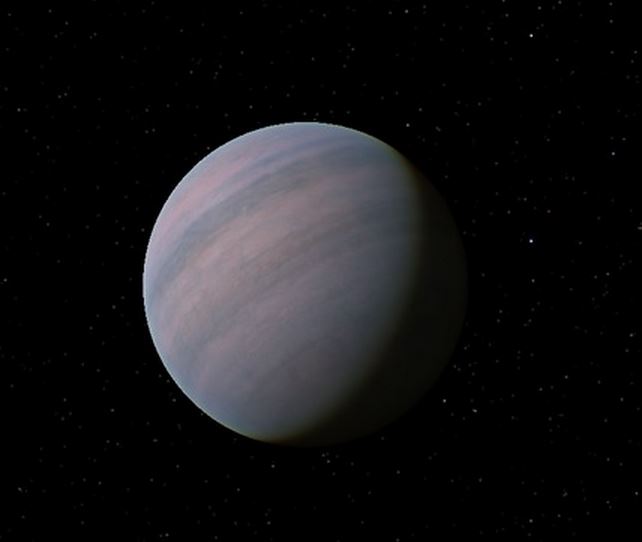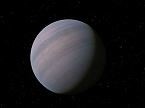An Earth-like planet that should be added to the list of potentially habitable ones, GJ 581d, does exist and should not be discarded as starspots noise, say scientists from the University of Hertfordshire and Queen Mary University of London.
GJ 581d orbits Gliese 581, a red dwarf (a small and relatively cool star) about 20 light years from Earth in the constellation Libra. The planet is in the Goldilocks Zone or Habitable Zone, meaning it’s distance from its sun and atmospheric pressure point to the possibility of there being life.
The planet candidate was detected using a spectrometer which measures the small changes in wavelength of light emitted by a star, caused when a planet orbits in front of it – this is known as the “wobble”.

An artist’s impression of the planet GJ 581d. (Image: Queen Mary University of London)
Researchers concluded in 2014, when data on the ‘planet’ was revisited, that it was simply noise in the data caused by starspots. They concluded there was no planet there and the matter seemed settled…, until now.
In this latest study, which has been published in the journal Science (citation below) scientists have questioned the methods used to rule out the planet’s existence.
Old method no good for spotting small planets
They say the statistical technique used last year to account for stellar activity was “simply inadequate for identifying small planets like GJ 581d.”
The old method was fine when used for spotting and identifying larger planets, because their wobble effect on stars was big enough to negate errors in the findings. However, that method is virtually useless in finding the smaller planet signals close to or within the noise caused by the stellar’s own variability.
The scientists have revised the existing data using a more accurate model. They are “highly confident” that GJ 581d is a real planet, despite stellar variability.
Lead author, Dr Guillem Anglada-Escudé, said:
“The existence, or not, of GJ 581d is significant because it was the first Earth-like planet discovered in the ‘Goldilocks’-zone around another star and it is a benchmark case for the Doppler technique.”
“There are always discussions among scientists about the ways we interpret data but I’m confident that GJ 581d has been in orbit around Gliese 581 all along. In any case, the strength of their statement was way too strong. If they way to treat the data had been right, then some planet search projects at several ground-based observatories would need to be significantly revised as they are all aiming to detect even smaller planets. One needs to be more careful with these kind of claims.”
Citation: “Comment on ‘Stellar activity masquerading as planets in the habitable zone of the M dwarf Gliese 581’,” Guillem Anglada-Escudé and Mikko Tuomi. Science. Published on 6th March, 2015. DOI:10.1126/science.1260796.
Video – GJ 581d

